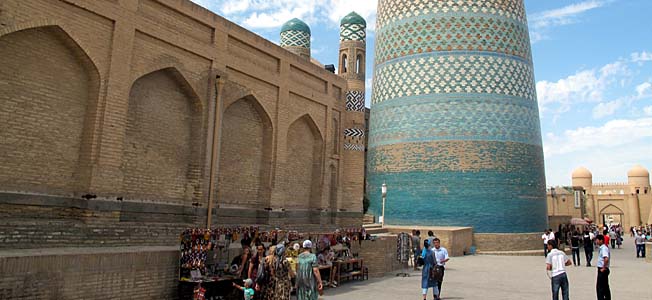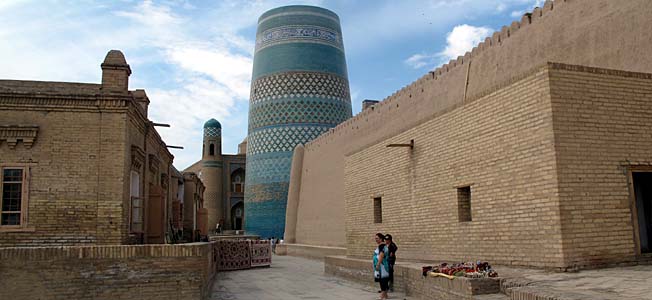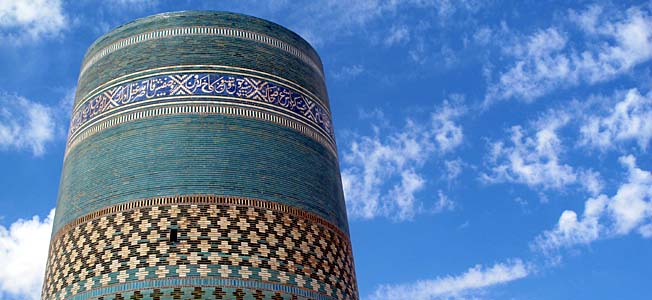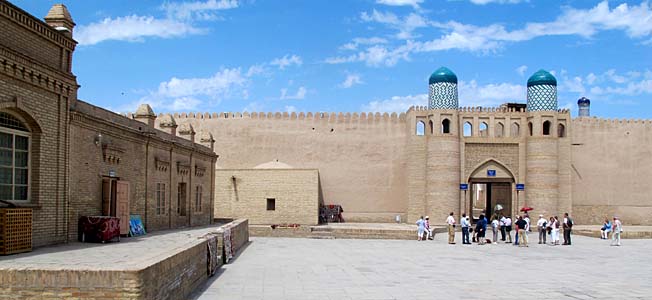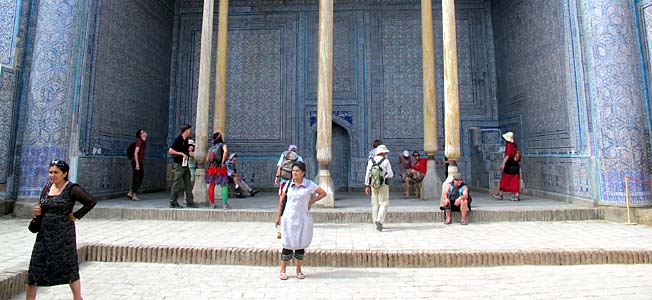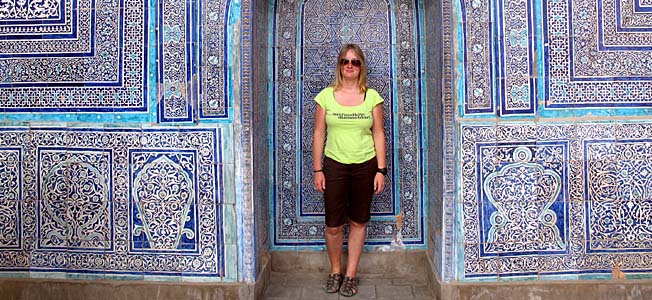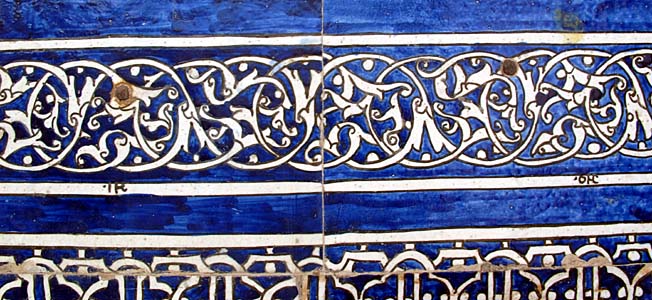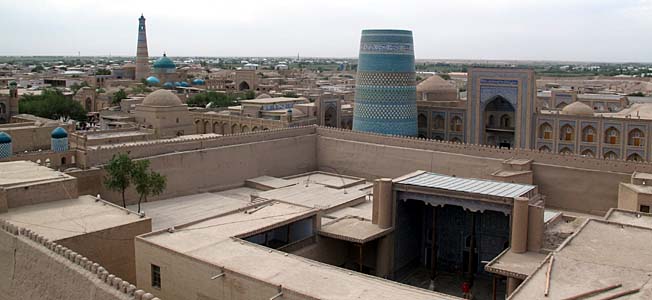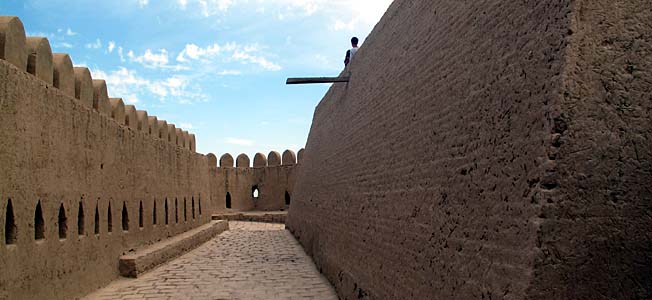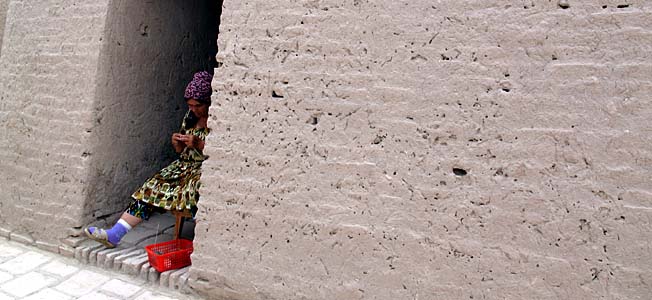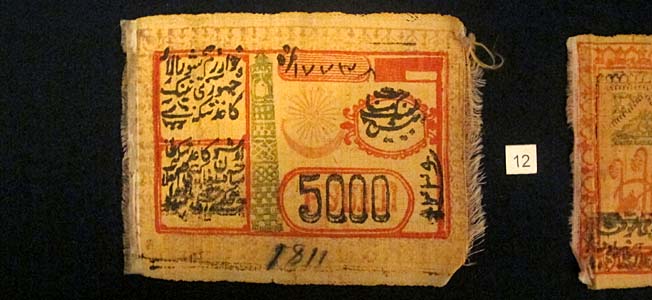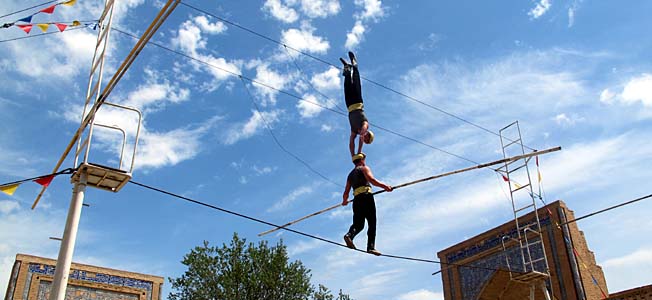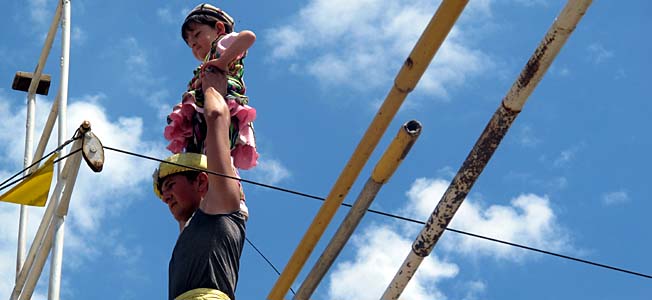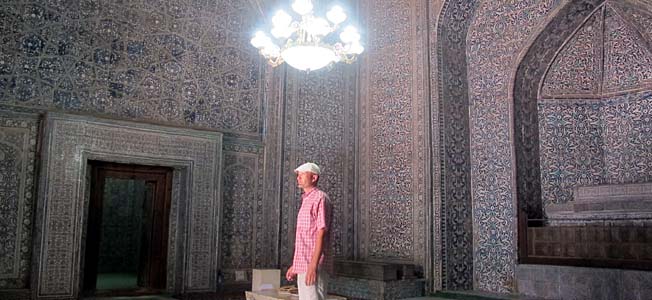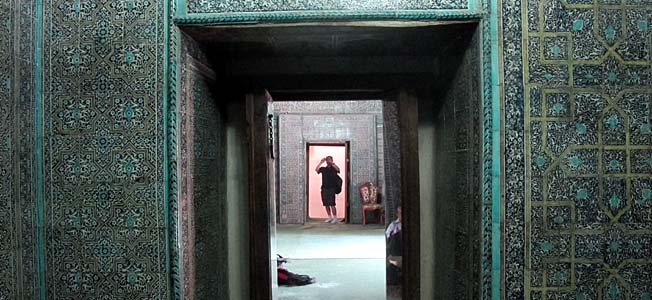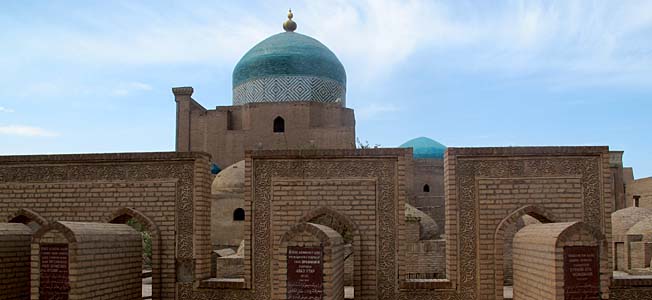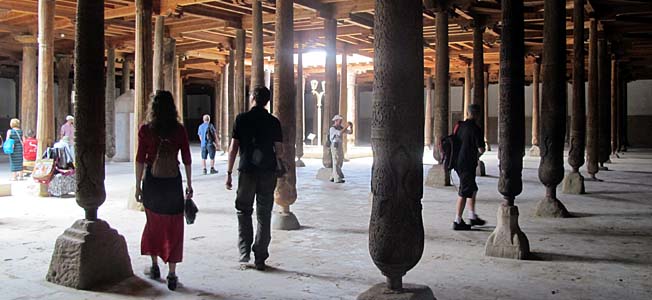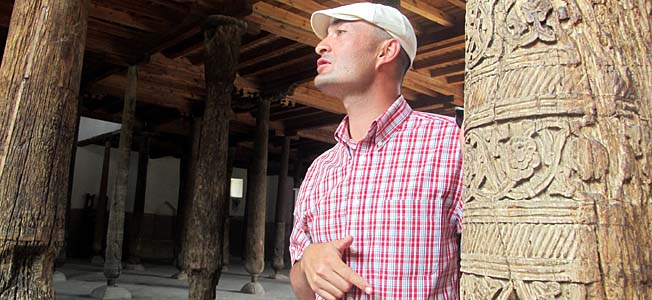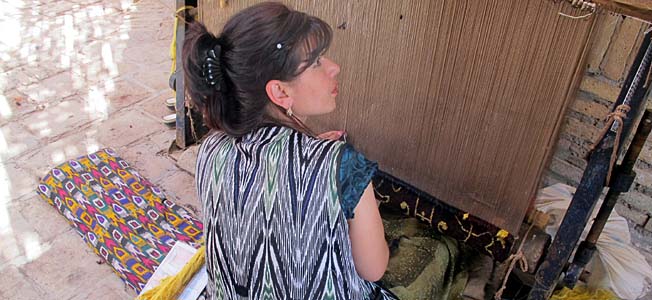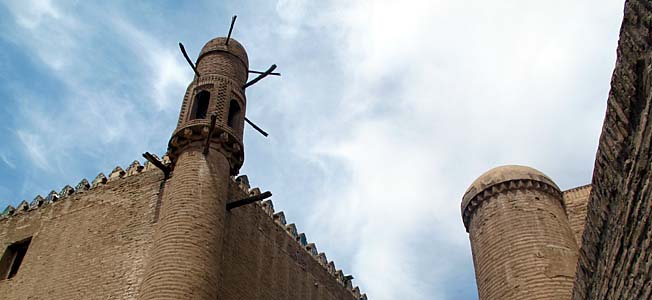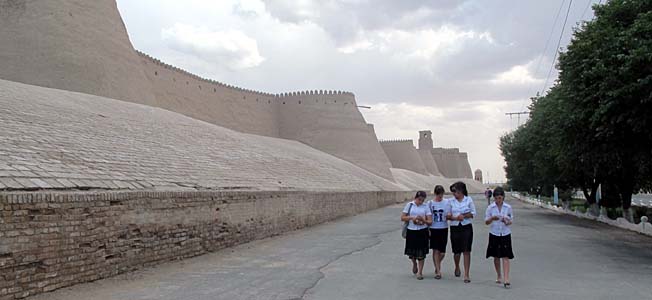The Inner Town of Khiva
Khiva is a major stop on the Silk Road and therefore a must see when visiting Uzbekistan. The town consists of an outer town which is nowadays the main residential area and an inner town where you can see lots of historic buildings. For simplicity reasons we started to call them the “4Ms” standing for mosques, mausoleums, minarets and madrasahs. Basically our whole journey in Uzbekistan consists of looking at the 4Ms of three key cities on the Silk Road which are Khiva, Bukhara and Samarkand. Therefore, my blog entries for the next days will contain many 4M pictures and I hope you stay with me and don’t get bored of them.
Today’s activity was to visit the 4Ms of the inner town of Khiva which is recognized by the UNESCO as a World Heritage Site. The inner town, also called Itchan Kala, is circled by a 10 meter high brick wall with four gates. Our hotel was only a five minute walk away from the West Gate through which we entered the town. Inside the walls the inner town features 250 old houses and 50 historic monuments so there’s a lot to see and you can easily spend a whole day walking around.
When entering the West Gate the first building which struck my eye was a large tower in blue, turquoise and white color. It’s supposed to be a minaret but when the Khan, who started to build the minaret, died his successor didn’t finish it. Nobody knows why this was the case but it’s said he might have realized the completed minaret will allow the muezzin, who is standing on top of the minaret to call for prayer, to overlook his harem. And you really don’t want a stranger to stare at your half naked women.
During our visit of the inner town our local guide Jelol was taking us around a number of buildings and I’m unable to recall them all. Many of them had beautiful tiles and when looking closer at them I spotted the technique they used to tile the walls. Each tile has a number which is the type of communication the tile maker used to tell the guy tiling the wall in which order he should put the tiles on the wall. Secondly each tile has a hole through which the tile was nailed on the wall which is very much different to the gluing today.
At one of the buildings we had the opportunity to climb on the roof from where we had a great overview of the town. I really love this town since the buildings and the wall surrounding them are very much intact and give an excellent impression how life on the Silk Road must have been hundreds of years ago.
We also had a look into a small museum featuring historic clothes, jewelry and money. Here I found a note particularly interesting. In contrast to our money today it wasn’t made out of paper but silk. What is also interesting to know about the museums and sights in Uzbekistan is there are some sights where you aren’t requested to pay an entrance fee. Instead the historic building or museum is turned into a shop and there a numerous local ladies trying to sell you scarfs, hats and other souvenirs. While I barely felt any tourism in Iran and Turkmenistan I’m now in the middle of it. Unfortunately some sights don’t look too nice when they are swamped by locals trying to sell you stuff which you don’t need.
I also felt the tourism in the area by specific tourist attractions being created and offered to us. One was an acrobatic show which some people in our group wanted to have a look at and so we did. There were two guys walking across a wire rope in all kinds of strange positions such as one guy making a handstand on the head of the other guy while he was crossing the wire rope.
I really enjoyed walking around in town and even remembered the location of the West Gate to make my way back to the hotel.



